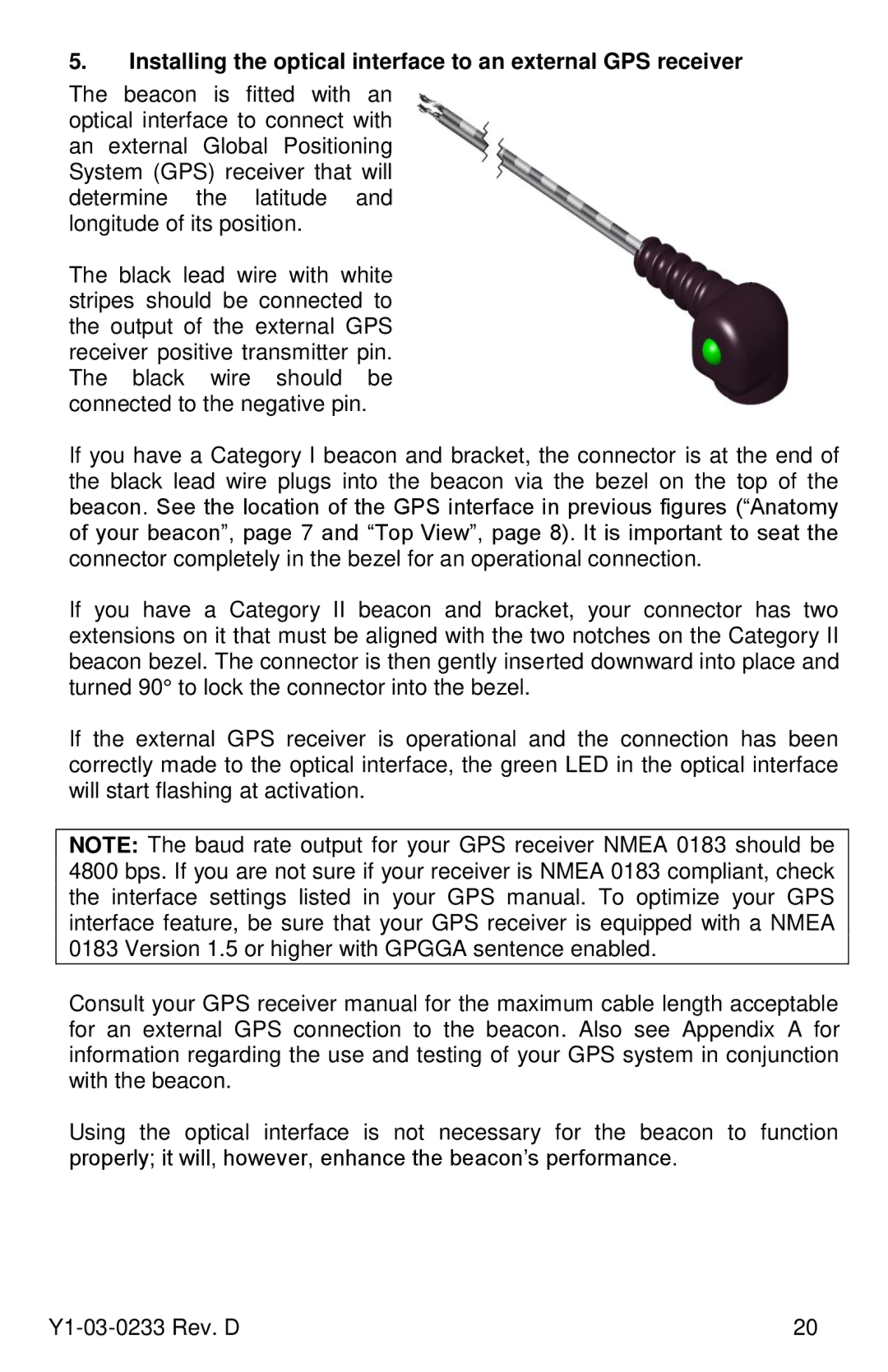Y1-03-0233, RLB-36 specifications
The ACR Electronics RLB-36, identified by model number Y1-03-0233, is a remarkable beacon that exemplifies state-of-the-art survival technology designed for maritime, aviation, and outdoor enthusiasts. It represents a commitment to safety and reliability when it matters most.One primary feature of the RLB-36 is its powerful strobe light, which emits a bright signal visible from considerable distances, making it an essential device for emergency signaling. The high-intensity LED strobe operates in various lighting conditions, ensuring visibility day or night. With a robust construction that withstands harsh environments, the RLB-36 is built to last, offering peace of mind to users who may find themselves in perilous situations.
The RLB-36 is designed with advanced technologies aimed at enhancing user experience and functionality. It includes features like Global Positioning System (GPS) integration, which allows for precise location tracking, an invaluable asset during rescue operations. The device can send out distress signals that include location data, expediting search and rescue efforts significantly.
Additionally, the RLB-36 has a user-friendly interface, allowing for quick activation in emergencies. The device is lightweight and compact, making it easily portable, which is crucial for those who venture into remote areas for activities such as boating, hiking, or flying. Its durable design also includes waterproof capabilities, effectively protecting it from the elements.
Another noteworthy characteristic of the RLB-36 is its long battery life. It utilizes efficient power management technology, ensuring that it remains operational for extended periods, crucial in emergencies when time is of the essence. The device is also equipped with a maintenance-free design, which means users can rely on its readiness without frequent checks or upkeep.
In summary, the ACR Electronics RLB-36, model Y1-03-0233, is not just a beacon; it is a lifeline defined by cutting-edge technology and rugged design. Its array of features—including a powerful strobe, GPS integration, lightweight construction, waterproof capabilities, and extended battery life—places it at the forefront of emergency signaling devices. Whether in the wilderness or out at sea, the RLB-36 ensures that help is never too far away.

